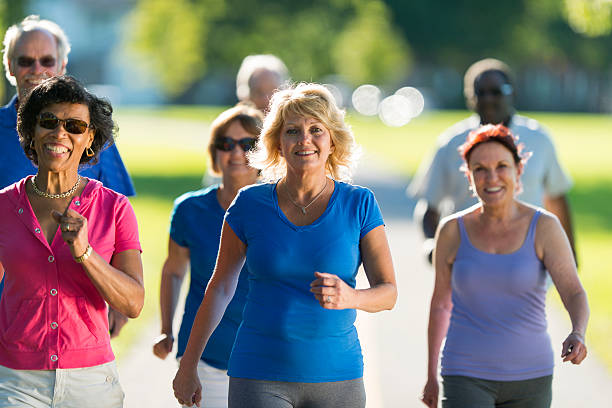Walking Speed Can Affect Longevity
For years, people of all ages have been told to walk several times a week. Walking helps keep the cardiovascular system healthier, helps to control weight and helps keep your muscle mass and muscle tone as you age.
Many reports over the years have said that even a casual stroll is healthy. They often recommend walking for at least 20 minutes at a time at least 3 times a week. The more you walk, the better the health benefits.
I’ve seen reports that suggest walking in a park, around your neighborhood and even going to your local shopping mall and just walking through the mall. Many malls open their doors hours before the stores open so that people can walk around for their health.
Researchers have found that walking at what they consider to be a normal speed, can result in a 20% reduction for all forms of mortality. Who doesn’t want to extend their lifespan by 20%?
Yes, casual walking is good for one’s health but is it good enough? Some may automatically think I’m going to recommend jogging, but that’s not where I’m going. Yes, jogging is healthier, but ONLY if you are physically able to jog. Many seniors are not able to jog, but they are able to walk.
Is there something in between walking and jogging that can be done and provides health benefits?
The same researchers say that brisk walking can result in a 24% reduction in all forms of mortality. But wait, it gets better, according to a report:
“The protective effects of walking pace were also found to be more pronounced in older age groups. Average pace walkers aged 60 years or over experienced a 46 percent reduction in risk of death from cardiovascular causes, and fast pace walkers a 53 percent reduction.”
Professor Emmanuel Stamatakis from the University of Sydney’s Charles Perkins Centre and School of Public Health, commented:
“A fast pace is generally five to seven kilometres per hour, but it really depends on a walker’s fitness levels; an alternative indicator is to walk at a pace that makes you slightly out of breath or sweaty when sustained.” (7 kilometers per hour converts to 4.3 miles per hour).

“Walking pace is associated with all-cause mortality risk, but its specific role – independent from the total physical activity a person undertakes – has received little attention until now.”
“While sex and body mass index did not appear to influence outcomes, walking at an average or fast pace was associated with a significantly reduced risk of all-cause mortality and cardiovascular disease. There was no evidence to suggest pace had a significant influence on cancer mortality however.”
“Separating the effect of one specific aspect of physical activity and understanding its potentially causal association with risk of premature death is complex.”
“Assuming our results reflect cause and effect, these analyses suggest that increasing walking pace may be a straightforward way for people to improve heart health and risk for premature mortality – providing a simple message for public health campaigns to promote.”
“Especially in situations when walking more isn’t possible due to time pressures or a less walking-friendly environment, walking faster may be a good option to get the heart rate up – one that most people can easily incorporate into their lives.”
So, the next time you go for a walk, even if you can’t walk as fast at 4.3 miles per hours (1 mile every 14 minutes), just try to pick up your pace as much as you are able. If this study is accurate, every little bit of speed you can muster may help you live a little longer.









Recent Comments